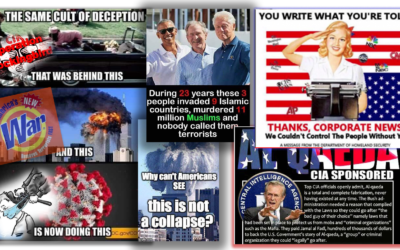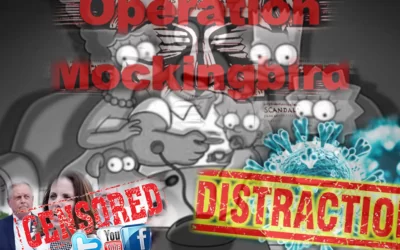Newly released U.S. records and assertions by a government whistle-blower support allegations that government agents allowed hundreds of firearms to be smuggled across the Arizona border and into the hands of Mexican drug cartels.
The records, released by a member of Congress, have prompted the Bureau of Alcohol, Tobacco, Firearms and Explosives to call for an independent review of a campaign designed to dismantle Mexican crime syndicates that purportedly wound up arming them instead.
The Arizona Republic reported last month that investigators have confirmed that two weapons connected to the ATF operations were found at the scene of a December gunbattle near Rio Rico, Ariz., where Border Patrol Agent Brian Terry was killed by suspected border bandits.
The controversy has engulfed Project Gun Runner, an ATF enforcement campaign. This week, the Center for Public Integrity and CBS News interviewed an ATF agent whose revelations about being instructed to let guns pass into Mexico are likely to accelerate a congressional investigation of the scandal.
Justice Department authorities and their counterparts in Mexico have complained for years that cartel violence is fueled in part by a flood of weapons, mostly AK-47s, purchased in the United States and smuggled unlawfully across the border.
Project Gun Runner was created in 2006 to combat that threat in Arizona by identifying and prosecuting firearms traffickers.
Dozens of so-called straw buyers have been arrested, and more than 10,000 guns confiscated. However, the ATF came in for criticism from the Justice Department’s Office of Inspector General last year because Project Gun Runner was catching only the straw buyers – small fish in the smuggling business.
The newly released ATF documents make it clear the bureau sought to overcome such criticism by allowing firearm smugglers to make purchases in Arizona so they could be traced to bigger fish south of the border.
In a case known as Operation Fast and Furious, gun dealers were encouraged to make sales to known traffickers, sometimes under surveillance. There were scores of transactions, involving more than 1,500 guns, with undercover agents and informers taking part in some deals
As a result of that strategy, however, assault rifles, potent .50-caliber guns and other weapons vanished. They were later recovered by police in Mexico, often after violent crimes.
Sen. Charles Grassley, R-Idaho, ranking minority member of the Senate Judiciary Committee, has pressed the ATF for two months to disclose details of Project Gun Runner and to justify a policy that allowed weapons into a nation where there were more than 36,000 drug-related murders in four years.
His inquiries, as well as those by journalists, were repeatedly ignored or met with denials from the ATF and the Justice Department.
At a news conference in February, the ATF in Phoenix announced that 34 suspects had been indicted and that U.S. agents had seized 375 weapons as part of Operation Fast and Furious. None of those arrested was a significant cartel figure.
The bureau’s own records showed that nearly 200 additional guns purchased during the operation were recovered by police in Mexico. Two of those weapons were used by suspected bandits during the shootout with Terry. According to the U.S. Attorney’s Office in Arizona, ATF agents did not learn about the purchase of those guns until three days after the sale and did not have the buyer under surveillance.
At the news conference, William Newell, special agent in charge of the ATF’s office in Arizona, was asked if agents knowingly allowed guns to be smuggled into Mexico.
“Hell no,” he said.
Yet, bureau records released by Grassley indicate that “walking” guns into Mexico was an approved strategy and that some agents were silenced when they protested that criminals were being armed and lives jeopardized.
In a March 12 e-mail, David Voth, supervisor of the Phoenix Gun Trafficking Group, acknowledged a “schism” among ATF agents and warned those questioning the program that they might wind up as jail guards. “It may sound cheesy, but we are ‘the tip of the ATF spear’ when it comes to Southwest border firearms trafficking,” Voth wrote. “If you don’t think this is fun, you’re in the wrong line of work – period.
One of the agents, John Dodson, has sought formal protection as a whistle-blower under federal law and is providing information to the Judiciary Committee. In an interview with the non-profit, nonpartisan Center for Public Integrity, Dodson said, “With the number of guns we let walk, we’ll never know how many people were killed, raped, robbed. . . . There is nothing we can do to round up those guns. They are gone.”
CBS News broadcast the interview with Dodson, along with ATF surveillance video of suspects leaving an Arizona gun store with cases of assault rifles.
Kenneth Melson, acting ATF director, reacted by calling for an independent probe of Project Gun Runner. “This review will enable ATF to maximize its effectiveness when undertaking complex firearms-trafficking investigations and prosecutions,” he said.
In his letter to the bureau, Grassley wrote: “Getting to the truth of the ATF whistle-blower allegations in this case is extremely important to the family of Brian Terry and should be important to all Americans.”
Dodson told CBS News that he was terrified that a U.S. law officer might be killed with a smuggled gun and was crushed when the fear apparently came true.



